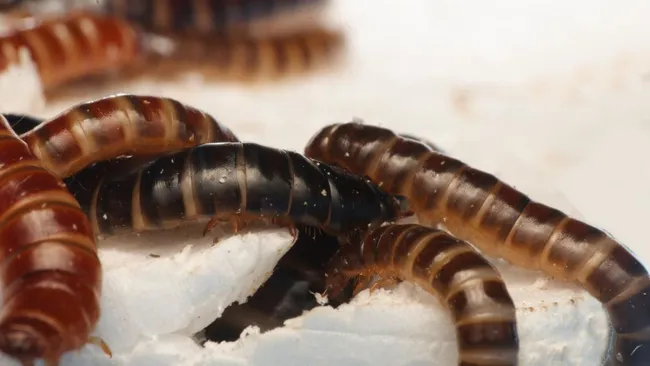Larvae of the Kenyan lesser mealworm found to feast on polystyrene then break it down in their guts.
Scientists may have found an unexpected ally in the battle against plastic waste: the lesser mealworm. Originally native to Africa but now found worldwide, the larvae of this beetle species (from the Alphitobius genus) have shown the ability to consume and break down plastic, according to recent research.
This discovery could be particularly impactful in Africa, the second-most plastic-polluted continent globally, despite contributing only 5% of the world’s plastic pollution, as reported by the World Health Organization.
Published on September 12 in Scientific Reports, the study revealed that lesser mealworms can digest polystyrene, a common plastic used in Styrofoam packaging and food containers. While the researchers haven’t yet pinpointed the exact species, they suspect it may be a new subspecies still to be classified.
This finding builds on previous studies involving other mealworm species. However, this is the first time that lesser mealworms—native to Africa—have been observed with this unique ability, according to Fathiya Khamis, a scientist at the International Centre of Insect Physiology and Ecology (ICIPE) in Kenya.
In the study, the larvae consumed nearly 50% of the polystyrene they were given. Their efficiency increased when the plastic was mixed with bran or grain husks. The key to this plastic digestion lies in the bacteria living in the mealworms’ gut. These microbes—such as Kluyvera, Lactococcus, and Klebsiella—help break down the complex polymers in plastic, turning them into simpler compounds that the mealworms can process without harm.
The bacteria produce enzymes capable of digesting plastic, and increasing the number of these microbes or enzymes could potentially enhance the mealworms’ ability to break down plastic. This breakthrough might eventually be applied to recycling plastic waste. Scientists are also considering the possibility of using these bacterial strains and enzymes in future plastic recycling technologies, turning plastic into valuable insect protein for animal feed.
As part of their next steps, the researchers plan to explore the mechanisms behind the bacteria’s role in plastic degradation, investigating whether these bacteria are naturally present in the mealworms or if they were acquired as a defense strategy after consuming plastic, explained Evalyne Ndotono, a co-author of the study and master’s student at ICIPE.
